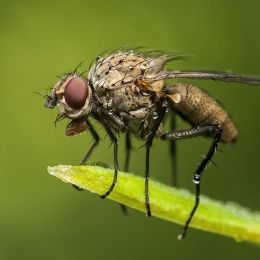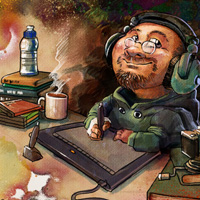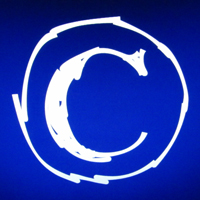- photo contests ▼
- photoshop contests ▼
- Tutorials ▼
- Social ▼Contact options
- Stats ▼Results and stats
- More ▼
- Help ▼Help and rules
- Login
Tutorials from cambridgeincolour.com (page 1)
cambridgeincolour.com has 43 tutorials published on pxleyes...
1 - Intro and Common Obstacles in Night Shots - Photography Tutorial

Night photography has the ability to take a scene and cast it in an unusual light-- much like the "golden hour" surrounding sunrise and sunset can add an element of mood and uniqueness to a sunlit scene. Just as how sports and landscape photography push the camera's limits for shutter speed and aperture, respectively, night photography often demands technical extremes in both.
submitted: 5 years and 3912 days ago
2 - Fog, Mist or Haze - Photography Tutorial

Photography in fog, mist or haze can give a wonderfully moody and atmospheric feel to your subjects. However, it's also very easy to end up with photos that look washed-out and flat. This techniques article uses examples to illustrate how to make the most out of photos in these unique shooting environments.
submitted: 5 years and 3912 days ago
3 - Converting a Color Photo Into Black and White - Photography Tutorial

Converting a digital color photo into black and white goes beyond simply desaturating the colors, and can be made to mimic any of a wide range of looks created by using color filters in black and white film photography. Conversion which does not take into account an image's color and subject of interest can dilute the artistic message, and may create an image which appears washed out or lacks tonal range. This section provides a background on using color filters, and outlines several different black and white conversion techniques-- comparing each in terms of their flexibility and ease of use.
submitted: 5 years and 3912 days ago
4 - Using Local Contrast Enhancement - Photography Tutorial

Local contrast enhancement attempts to increase the appearance of large-scale light-dark transitions, similar to how sharpening with an "unsharp mask" increases the appearance of small-scale edges. Good local contrast gives an image its "pop" and creates a three-dimensional effect-- mimicking the look naturally created by high-end camera lenses. Local contrast enhancement is also useful for minimizing the effect of haze, lens flare, or the dull look created by taking a photograph through a dirty window.
submitted: 5 years and 3912 days ago
5 - Averaging Images to Reduce Noise - Photography Tutorial

Image noise can compromise the level of detail in your digital or film photos, and so reducing this noise can greatly enhance your final image or print. The problem is that most techniques to reduce or remove noise always end up softening the image as well. Some softening may be acceptable for images consisting primarily of smooth water or skies, but foliage in landscapes can suffer with even conservative attempts to reduce noise.
submitted: 5 years and 3912 days ago
6 - Overview: New Possibilities with Digital - Photography Tutorial

Digital cameras have opened up amazing new photography possibilities. The following is an overview of several digital techniques that were on this website in the beginning. It now serves as a motivator to delve into the various techniques available in the digital world. Each technique has links to more detailed advice if you want to learn more...
submitted: 5 years and 3912 days ago
7 - Using Wide Angle Lenses - Photography Tutorial

A wide angle lens can be a powerful tool for exaggerating depth and relative size in a photo. However, it's also one of the most difficult types of lenses to learn how to use. This page dispels some common misconceptions, and discusses techniques for taking full advantage of the unique characteristics of a wide angle lens.
submitted: 5 years and 3912 days ago
8 - Photo Stitching Digital Panoramas: Image Projections - Photography Tutorial

An image projection occurs whenever a flat image is mapped onto a curved surface, or vice versa, and is particularly common in panoramic photography. A projection is performed when a cartographer maps a spherical globe of the earth onto a flat piece of paper, for example. Since the entire field of view around us can be thought of as the surface of a sphere (for all viewing angles), a similar spherical to 2-D projection is required for photographs which are to be printed.
submitted: 5 years and 3912 days ago
9 - Photo Stitching Digital Panoramas, Part 2: Using Stitching Software - Photography Tutorial

Digital photo stitching software is the workhorse of the panorama-making process, and can range from providing a fully automatic one-click stitching, to a more time-consuming manual process. This is part 2 of the tutorial, which assumes all individual photos have already been properly captured (stage 1 below is complete); for stage 1 and an overview of the whole stitching process please visit part 1 of this tutorial on digital panoramas.
submitted: 5 years and 3912 days ago
10 - Photo Stitching Digital Panoramas, Part 1: Overview and Capture - Photography Tutorial

Digital photo stitching for mosaics and panoramas enable the photographer to create photos with higher resolution and/or a wider angle of view than their digital camera or lenses would ordinarily allow—creating more detailed final prints and potentially more dramatic, all-encompassing panoramic perspectives. However, achieving a seamless result is more complicated than just aligning photographs; it also involves correcting for perspective and lens distortion, identifying pixel-perfect matches between subject matter, and properly blending each photo at their seam. This tutorial aims to provide a background on how this process works, along with discussing common obstacles that one may encounter along the way—irrespective of panorama software type.
submitted: 5 years and 3912 days ago






